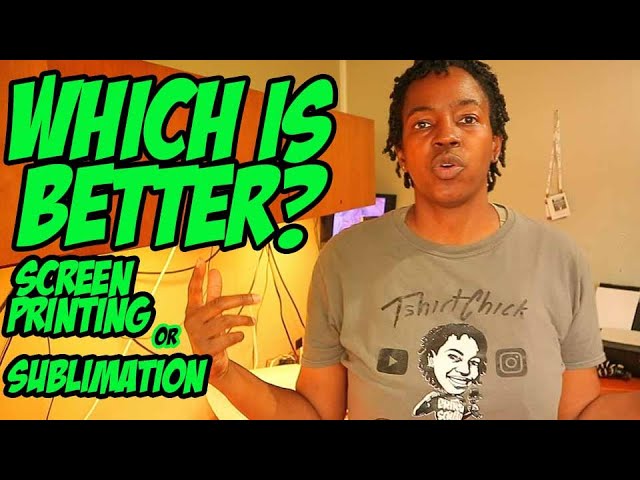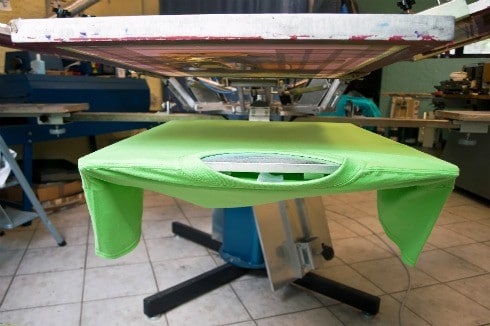Excitement About Tx Tees
Excitement About Tx Tees
Blog Article
Tx Tees for Beginners
Table of ContentsExcitement About Tx TeesExamine This Report on Tx TeesAll about Tx TeesThings about Tx TeesThe Facts About Tx Tees Revealed5 Simple Techniques For Tx TeesGet This Report on Tx Tees
That brings your overall to approximately $1,900 gross and delivery. Include up various other prices, like the variety of utilities it takes to run the store and the price of ink and emulsion per design. custom t-shirt design. Take the print below. This is a one-color image, so the expense of ink per shirt is about 20 cents.The solution needs to just be a few cents given that you 'd only need to coat one display for this work. How much should you charge per tee shirt to make an earnings? Typically, printers attempt to make up to 45% earnings on a print task. Below's a table to help you figure out that: total expense per thing percent of desired revenue as a decimal (example:.25 or.45) revenue made per thing per task Currently allowed's speak about the profitability of DTF.

With DTF, you can print a handful of t shirts, or simply one. Both screen printing and DTF have their particular niches in the globe.
The 25-Second Trick For Tx Tees
The very best method to recognize? Ask around and see what print stores like your own are doing. embroidery shop. Attempt both out and see which you like better
When you're selecting what kind of printing approach to use for printing your artwork styles on your garments, it's vital that you know the differences between these two methods so you can maximize results while reducing expenses. Display printing is one of the most frequently made use of strategy for publishing designs on textiles.
DTG printing is likewise known as area or straight to garment printing because it publishes only what is needed rather of making a display as display printers do. https://penzu.com/public/e2c1da3b6117bcfa. Display printing works by screen filler squeegee display printing ink screen mesh screen, then moving the photo to garment using warm and/or pressure
The DTG printer uses unique dye-sublimation inks that are applied right into a pre-designed image by an electronic printing system. The inks enter into the fabric, permitting dynamic colors and phenomenal information. It's additionally referred to as place or direct to garment printing due to the fact that it prints just what is needed rather of making a screen as display printers do.
The Only Guide for Tx Tees
First, it's much quicker - you can print a fullcolor photo in mins, instead of hours for display printing. Second, there's no set up time or costs included - you can print any kind of style you like, without having to develop a screen. Third, there's no waste - due to the fact that screen printers display print one style at once, they need to evaluate each shade independently.
The paper is really expensive and can only be utilized when. Once it's published on, it has to be thrown out. - The initial acquisition cost is less than the upfront investment of DTG printers- You can publish multi-color layouts one screen each time rather of needing to publish each color independently like DTG printing.

10 Simple Techniques For Tx Tees
Instead of utilizing display mesh as screen printers do, dye sublimation printers utilize laser technology to transfer your photos onto garments or paper. A warmth process transfers the color from its solid-state directly into the gas phase which in turn integrates it onto material substrates when they are rapidly heated to heats under high stress.
Sublimation printing is green. It makes use of less water than screenprinting, and due to the fact that it doesn't entail using hazardous solvents, it's secure for all kinds of clothing. The color sublimation inks are likewise odor-free when healed, unlike display printers that make use of hazardous chemicals during the screen printing process that leave behind an unpleasant odor.
They likewise conserve cash on pricey tools like direct exposure units since dye sublimation printers don't require a UV exposure system or a flash treatment stove that is typically utilized in display printing (screen printing shop). What is straight to garment printing (DTG Printing)? DTG printing is a digital screenprinting procedure that prints straight onto material utilizing specialized inkjet printers
Rumored Buzz on Tx Tees
DTG printing offers numerous benefits over typical screenprinting, including the capability to print photo top quality pictures, greater shade vibrancy, and the capability to print layouts on darker textiles. DTG printers work by warming the fabric ink until it becomes a gas. The gas after that permeates the material, bonding with the fibers to create an irreversible print.

Display printers simply prepare their screen then start printing up until they run out of item or ink.- There is a large range of seasoned screen printers all over the world, which can be helpful for novices. - It's a slower procedure - screen printers frequently need to wait on the ink to completely dry before they can publish the following color- Display printers call for manual work, so there's a greater learning curve and it takes longer to create a high-grade design- Display printing isn't as exact as DTG printing, so you may obtain some "bleeding" of shades from one part of the image onto an additional otherwise done correctly.
The Ultimate Guide To Tx Tees
Rather of making use of display mesh as display printers do, color sublimation printers utilize laser technology why not look here to move your images onto garments or paper. A warmth process moves the dye from its solid-state straight into the gas stage which consequently fuses it onto material substrates when they are swiftly heated up to heats under high stress.
Sublimation printing is eco-friendly. It utilizes much less water than screenprinting, and due to the fact that it doesn't entail the usage of unsafe solvents, it's risk-free for all kinds of garments. The color sublimation inks are also odor-free when healed, unlike screen printers that use hazardous chemicals throughout the screen printing process that leave behind an undesirable odor.
They also save money on expensive tools like exposure devices given that dye sublimation printers don't need a UV direct exposure device or a flash treatment oven that is commonly used in screen printing. What is direct to garment printing (DTG Printing)? DTG printing is a digital screenprinting process that prints straight onto material making use of specialized inkjet printers.
Things about Tx Tees
DTG printing offers lots of benefits over standard screenprinting, including the capacity to print photographic top quality photos, better shade vibrancy, and the capacity to publish layouts on darker fabrics. DTG printers function by heating up the fabric ink until it becomes a gas. The gas after that penetrates the material, bonding with the fibers to develop a permanent print.
Report this page